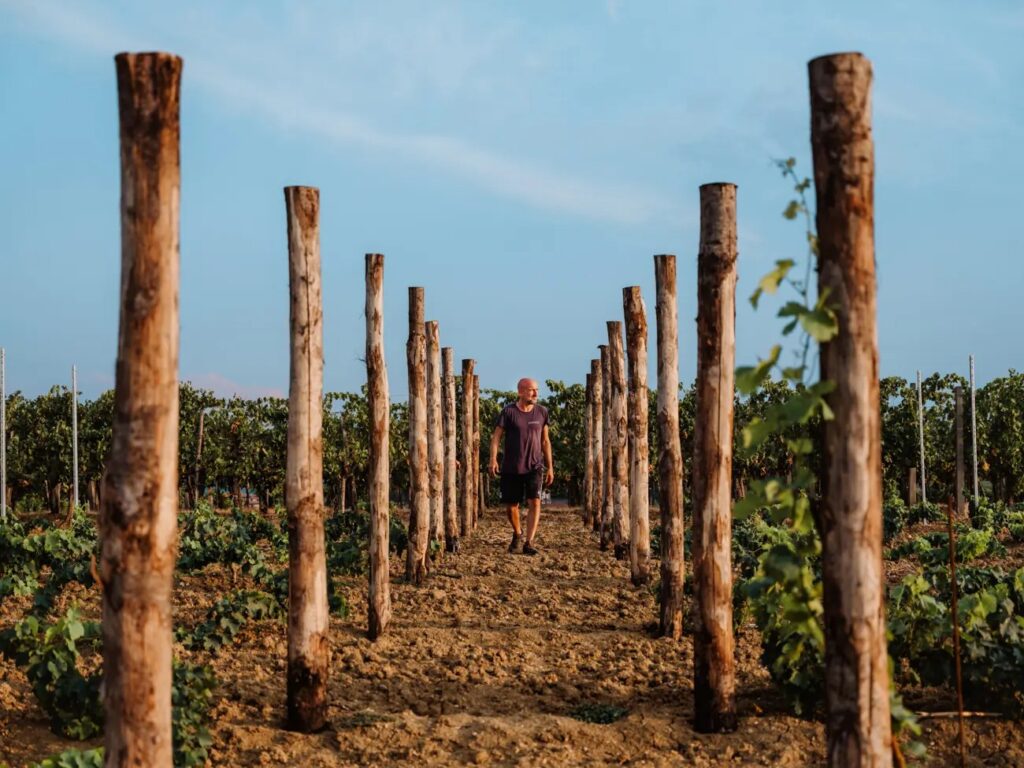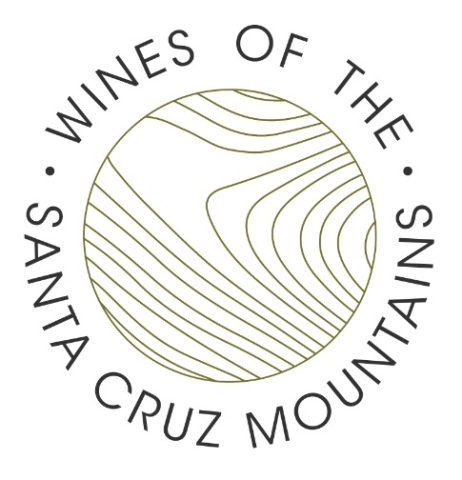Grenache By Any Other Name (Madrevite Recent Releases)

Madrevite‘s Nicola Chiucchiurlotto has one of those made-for-TV-movie prodigal son type of stories that seem so prevalent in the wine world.
In 2003, Chiucchiurlotto founded Madrevite in Castiglione del Lago, which sits in the hills near lakes Trasimeno and Chiusi, along the Umbria/Tuscany border. In that way, Chiucchiurlotto would seem like a relative newcomer by Italian wine standards (the region has viticultural history dating back to Etruscan times), but his current crop of 11 hectares of vines sits in the area where he was born, and is reborn from land that grew his grandfather Zino’s vineyards, planted in the late 1970s.
Chiucchiurlotto’s efforts aren’t just born of nostalgia, however; he cites the wind in the area as an all-important aspect. as it provides the right amount of humidity while repressing disease and pest pressure for plants. Put another way, there is very good fine wine potential in the land he calls home. He describes the spot as “a Renoir painting” and, judging by the photos, he’s not far off the mark.
Unlike Chiucchiurlotto, this region of Umbria has an important red grape that isn’t native: Gamay del Trasimeno, better known as Grenache/Garnacha (and less well known as Cannonau in Sardinia, and Tai Rosso in the Veneto). Likely, Grenache first made its way here from Spain in the 1600s, then again in the late 19th and early 20th centuries (during a time when when Sardinian shepherds migrated to the continent). As Chiucchiurlotto put it during a recent online media tasting, “it’s a very beautiful grape, a very important grape.”
As for the name (besides being easier to pronounce than Chiucchiurlotto), a Madrevite is a tool once used by Umbrian winemakers seal barrels of wine. Good luck trying to find one online, by the way (the closest I got was this expensive pen that looks like a lightsaber and, I must admit, seems incredibly cool).
Anyway…
Grenache Gamay del Trasimeno isn’t all that Madrevite does, nor all that it does well, as you’ll read about in a second or two…




2022 Madrevite ‘Elve’ Colli del Trasimeno, Trasimeno, $40
The name of this white means “she’s finally arrived” in the Umbrian dialect, and is playful rather than traditional. As for the variety used here, Grechetto was once “considered the cheap wine, the wine for the supermarket” according to Nicola. But here, it gets a delicate, but crisp, makeover in a more elegant style, with citrus, white flower blossoms, herbs, and an energetic, fresh mouthfeel that’s infectiously jubilant.

2022 Madrevite ‘Il Reminore’, Umbria, $NA
This white is crafted from Trebbiano Spoletino which “is like young people,” as described by Nicola. “Imagine a long-aging wine, it’s elastic, fluid.” Hence the name (meaning “the minor/youngest king”). Aromatic, with citrus, floral, and tropical hints, with some exotic and herbal, Sauvignon-like notes. The palate is quite energetic, and continues evoking the SB comparison, with a fresh, mouthwatering sensation and an very long finish. Nicola thinks that “for the future, this variety represents a secret [weapon]” for the region—and he seems to be on to something here.

2022 Madrevite ‘La Bisbetica’ Rosé Umbria, $NA
Produced since 2009, this pink has a name inspired by “The Taming of the Shrew” (which was being played in nearby theaters when the wine was introduced), which is appropriate given that Nicola had to “tame” the vigor of the Grenache vines used to source it, once they’d found the right spot for growing them .Rose petals, just-ripe red berries, and exotic/tropical fruits kick this rosé off. The mouthfeel is what you’d expect from these guys given their whites: energetic, vibrant, and fresh-as-a-daisy. This one would excel with—and elegantly elevate—all kinds of foods, from apps to salads to white meat and fish dishes. Savory and delicious.

2022 Madrevite ‘Opra’ Gamay del Trasimeno, Umbria, $NA
This Gamay del Trasimeno (Grenache) is made in what Nicola calls his “Bourgogne style,” emphasizing freshness and accessibility. Opra basically means “enjoying your work” in Umbrian, and again the name fits. It’s a light and spicy (and enjoyable) Grenache, favoring red fruit and supplying ample garrigue notes and palate freshness. Strawberry, leather, white pepper, and even cocoa all makes some appearances, and ultimately this is jauntily light on its feet. Dangerously easy to imbibe.

2020 Madrevite ‘C’osa’ Gamay Colli del Trasimeno, Umbria, $35
“My dream is to produce a wine for the people, a cosmopolitan wine,” Nicola noted about this reserve red, which is hand-harvested, and aged in oak and cement tanks. While still in the super-fresh style, this take on Grenache is a bit darker, a bit more focused, more savory, juicier, and a bit more concentrated in its red fruit aromas and flavors. There’s additional intensity to the herbal notes, spices, and fruit on the palate, with more length on the finish than the Opra and, generally, a more serious demeanor (despite all of its energy).
Cheers!






